Italian Sweet Pepper Pesto, Amalfi Coast Style
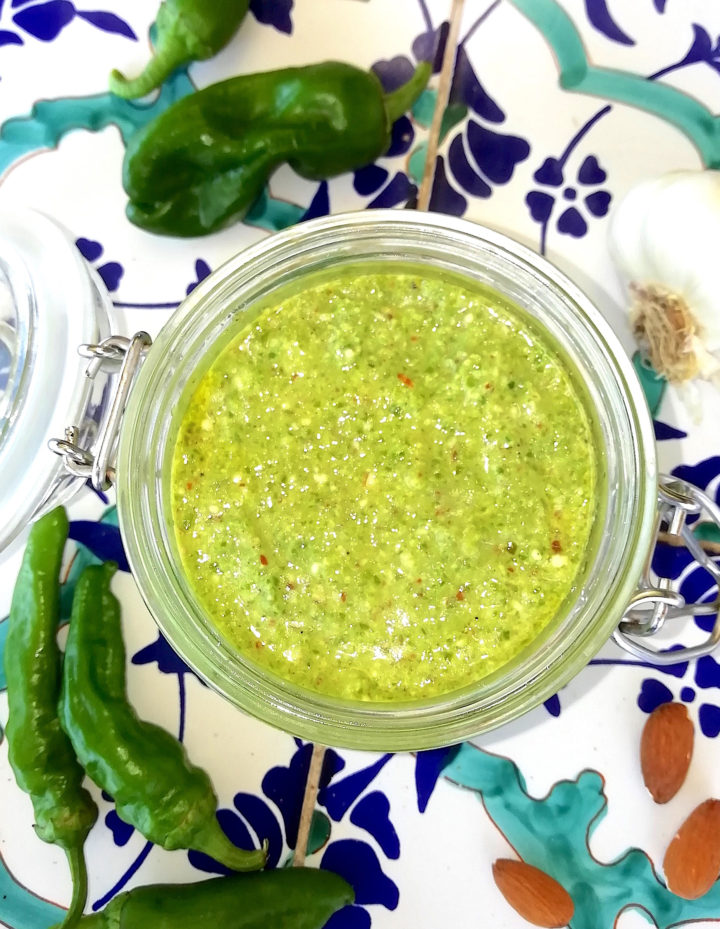
If I were to write a cookbook titled, The Flavors of the Amalfi Coast, this wonderful preparation for Italian Sweet Pepper Pesto would certainly be included on the recipe list. Not only because it was created for the first time years ago by Da Adolfo, one of the most famous coastal restaurants in Positano, but also because its gained immense popularity since then —due to its unique delicious taste that has left a lasting impression on their patrons from both the near and far-away lands.
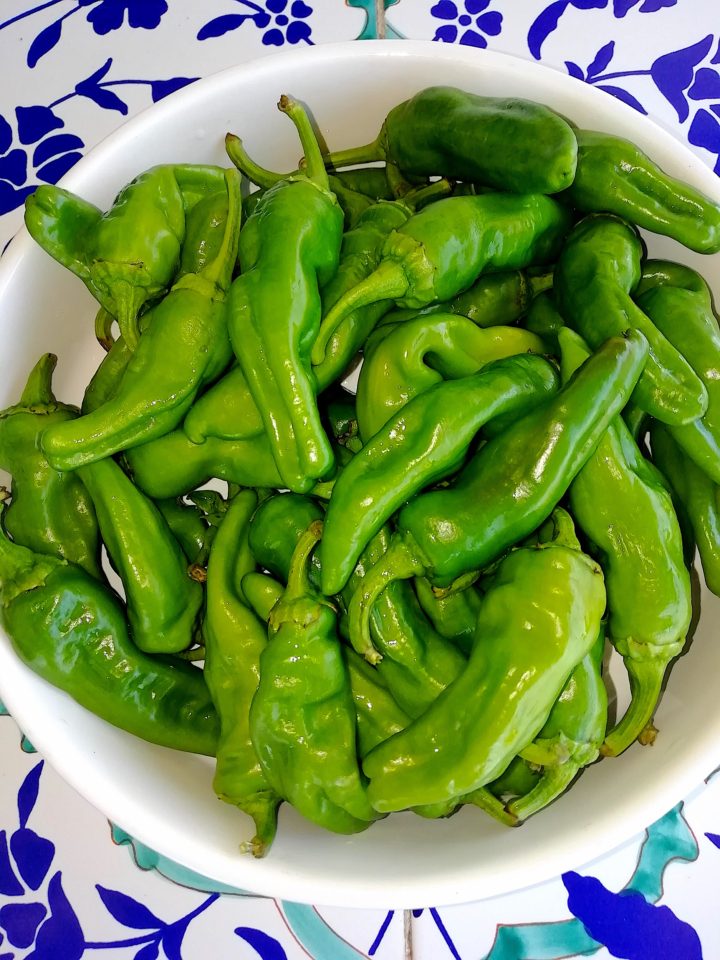 I still recall the words that went through my mind when I first tasted it at the restaurant long ago, tossed with spaghetti—so delicate, fresh-tasting, and delicious. Like many other local folks, that single taste was all it took to capture my interest and desire to make it a part of my cooking repertoire. But especially because this pesto preparation celebrates the pure and simple, fresh taste of Italian sweet peppers, one of my favorite summer vegetables, which thrive in the fertile, mineral-rich lands all over the Campania countryside.
I still recall the words that went through my mind when I first tasted it at the restaurant long ago, tossed with spaghetti—so delicate, fresh-tasting, and delicious. Like many other local folks, that single taste was all it took to capture my interest and desire to make it a part of my cooking repertoire. But especially because this pesto preparation celebrates the pure and simple, fresh taste of Italian sweet peppers, one of my favorite summer vegetables, which thrive in the fertile, mineral-rich lands all over the Campania countryside.
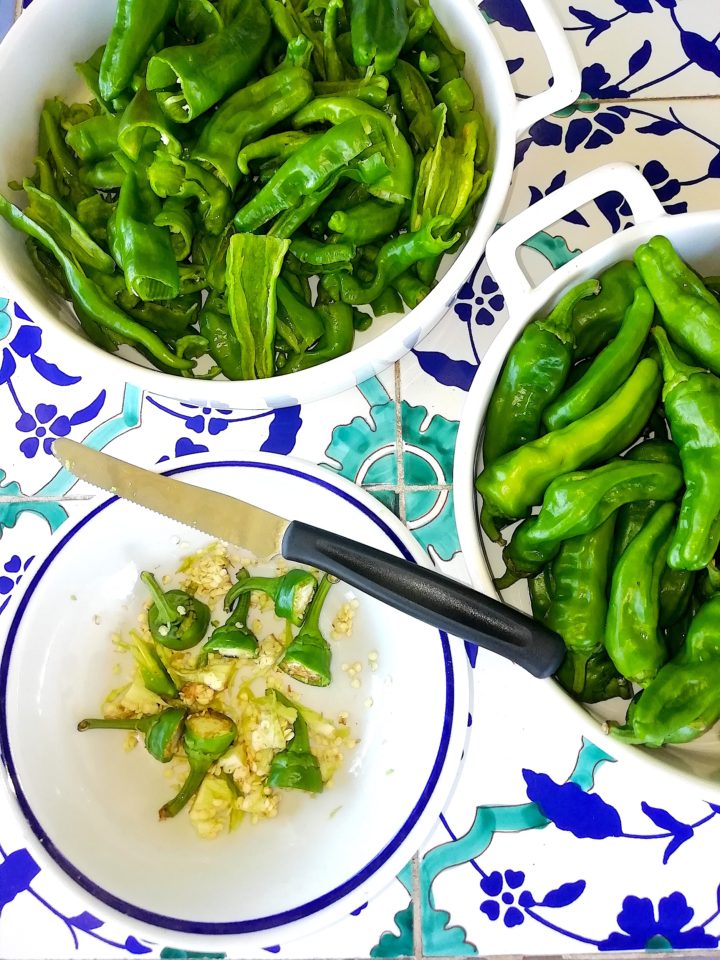
Every summer since then I’ve been whipping up batches all season long, putting the piles of Italian sweet peppers we gather from our garden to superb use. It’s quick and easy to make, and delicious tossed with spaghetti or thin linguini (or any small pasta shape with curves and grooves to capture the sauce), on its own smeared over crusty slices of rustic bread —or used as a condiment to dress up a sandwich with a perfect, fresh summery touch, Amalfi Coast style.
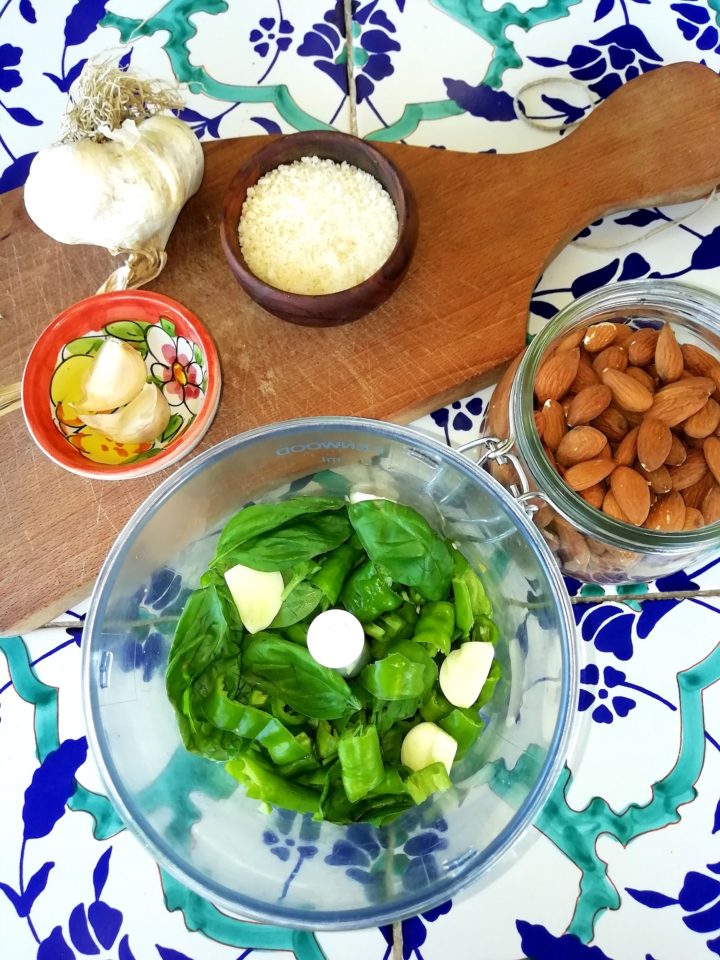
For Serving with Spaghetti
Toss the pesto vigorously with ‘hot’ spaghetti and a couple of splashes of the ‘hot’ pasta cooking water, or as needed to loosen the pesto and create a creamy sauce that coats the strands of pasta evenly.

This is how I make Italian Sweet Pepper Pesto at home, known as Pesto di Friggitelli on the Amalfi Coast, or as I like to call it, Pesto di Friggitelli alla Amalfitana (Amalfi Coast style). The ingredients are simple; Italian sweet peppers, almonds, garlic, Parmigiano cheese, coarse salt, and extra-virgin olive oil. Plus, a small handful of fresh basil leaves, or just enough to give the pesto a ‘subtle’ additional burst of fresh, bright summer flavor. Be sure to keep in mind this pesto is meant to celebrate the fresh, sweet, delicate taste of the Italian sweet peppers, not the basil, which can easily smother the taste of the star ingredient with over use. This is not pesto alla Genovese, the lively, basil-rich pesto from Genoa in Italy’s north, nor should it taste like it —more a laid-back southern charmer, with a sweet, nutty taste that’s sure to please in a more subtle way.
Buon Appetito!
≈
Read more about → Ristorante Da Adolfo – A must-do lunch spot in Positano!
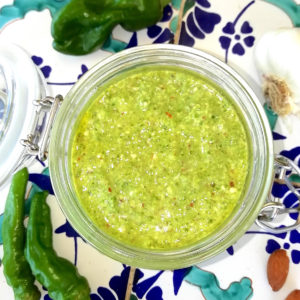
Italian Sweet Pepper Pesto, Amalfi Coast Style
Ingredients
- 1/2 pound Italian sweet peppers well-rinsed
- 8 to 10 fresh basil leaves stems removed
- 2 medium garlic cloves sliced in half lengthwise, inner germ (green sprout) removed - if any
- 1/4 cup almonds unpeeled
- 1/4 cup Parmigiano-Reggiano cheese grated
- 1/2 teaspoon coarse sea salt or kosher salt
- 1/2 cup extra-virgin olive oil
Instructions
- Clean the peppers; slice off the tip and stem, then make a slit down the side. Scrape away the seeds and membranes, then thinly slice the peppers crosswise.
- In the bowl of a food processor fitted with the blade attachment, combine the peppers, basil, and garlic and pulse a few times just to incorporate the ingredients. Add the almonds, Parmigiano, and salt and continue to pulse until coarsely chopped, scraping down the sides as necessary.
- With the machine running, pour in the olive oil in a slow, steady stream and process until the ingredients are creamy and well-blended. Taste for salt, and adjust to taste, if necessary.
- Once finished, scrape the pesto into a small bowl and pour a thin layer of olive oil over the surface to prevent oxidation before use.
